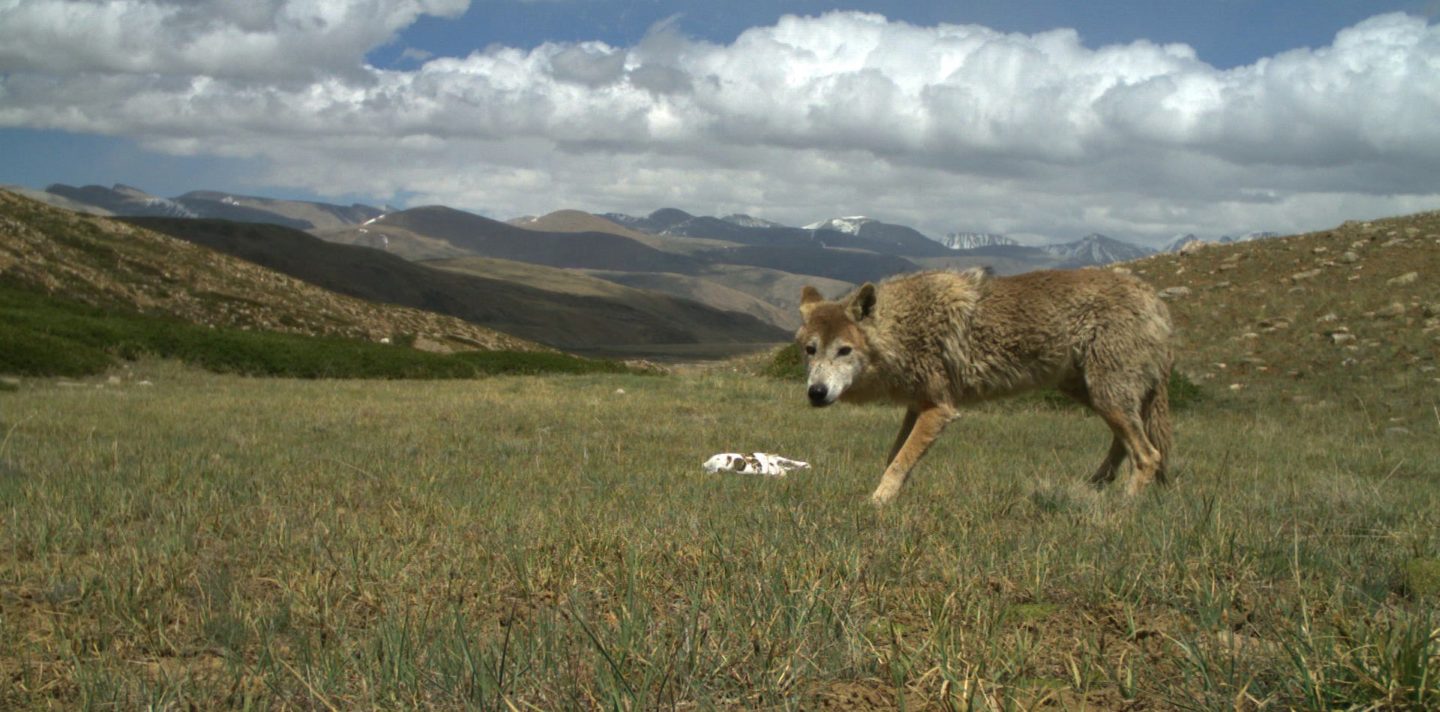IUCN Red List classification for a unique high altitude wolf

Over five kilometres high up in the Himalayan mountain range and on the Tibetan Plateau, the atmosphere is thin and the oxygen low. Yet even under such hostile conditions, a unique species of wolf still roams the high altitude wilderness. Adapted to their inhospitable habitat, packs of Himalayan wolves (Canis lupus chanco) roam the terrains of the extreme high elevations from India and Nepal to western China.
But while the Himalayan wolf inhabits a large area, its numbers are spread across it as thinly as the air at these altitudes. A rough estimate of their population puts it between 2.275 and 3.792 individuals, with decreasing population trends estimated and substantial conservation action being crucial.
Geraldine Werhahn (FFN winner 2018) has been conducting research in the Himalayas for years, collecting data on the diet, habits, and ecology of the species under extreme high altitude conditions, while at the same time engaging with the local communities to better understand their perspectives on living alongside the diverse wildlife species up there. These insights into the Himalayan wolf gathered by Geraldine and her team, led to the first IUCN Red List assessment of the species in June 2023, classifying it as Vulnerable based on low population size and trend.
Classification, Concerns, and Conservation
Beyond adding legitimacy to the concerns surrounding the species, the IUCN Red List assessment can act as a springboard for pushing initiatives for the species’ protection. With its vulnerable status warranting targeted conservation efforts, the attention paid to it can catalyse future actions to safeguard its survival and prosperity. This Red List assessment marks a pivotal point for these wolf populations as it brings them to light and recognizes that they are genetically distinct from the wider ranging Holarctic grey wolf. Importantly, the assessment compiles the latest science around the Himalayan wolf and is central to inform policy makers, politicians, conservationists, and researchers.
And while the potential for positive action coming from the assessment is a promising prospect, it comes with some concerning conclusions about the Himalayan wolf.
Only recently recognised as a separate taxon, largely thanks to Geraldine’s research, these wolves have evolved to withstand, and thrive in, the high-altitude, low-oxygen conditions of their habitat. But despite the population being well adapted to its environment, the IUCN Red List assessment forecasts a decline in its numbers “considering ongoing substantial threats towards the population and lack of conservation action”.
Its classification as a separate taxon disentangled the Himalayan wolf’s status from that of the more widespread Holarctic grey wolf, something that allowed it to be assessed separately. This taxonomic recognition was necessary based on the evidence and important to bring to attention the major threats facing the unique Himalayan wolf, such as illegal hunting for the trade of its fur and body parts.
Conflicts & Coexistence
But one of the major concerns for the species’ conservation comes from human wildlife conflict, as instances of wolves attacking livestock can be locally frequent also depending on the availability of wild prey. These conflicts put the pastoral community at odds with the Himalayan wolf, leading to the latter’s “persecution for livestock depredation retaliation and prevention”, as stated in the IUCN Red List assessment.
Different factors, such as falling numbers of the wolves’ wild prey, and more and more cases of livestock grazing grounds overlapping with the species’ habitat combine to increase the tension, as the livelihood of both sides is put at risk. The assessment further underscores how “it will be important to incorporate the Himalayan wolf in conservation programs, which may assist with promoting public acceptance and reducing persecution”.
Scaling this metaphorical mountain is the focus of Geraldine’s latest research endeavours; working with local communities to find sustainable, implementable measures that can allow for the peaceful coexistence of local wolves and local communities. In her work as part of the Himalayan Wolves Project, Geraldine and her fellow conservationists collect data on the biology and ecology of the animals inhabiting these areas to better understand and document the ecosystem.
Bringing together the insights from their fieldwork, and in cooperation with the local communities, they work on developing strategies for mitigating these human-wolf conflicts, with initiatives ranging from education campaigns to the installation of non-invasive tools keeping predators away from the livestock.
In Geraldine’s work, research evidence and local capacity-building come together to strengthen community stewardship for the conservation of not only the Himalayan wolf, but the whole ecosystem in these regions of the Himalayas. And in this high mountain expedition, the achievement of the IUCN assessment serves as a major milestone since, as Geraldine puts it “everyone goes there first to check, and this will provide important leverage for more research and conservation attention”.
Written by Christos Vlasakidis
Photo by Geraldine Werhahn (Himalayan Wolves Project)

















